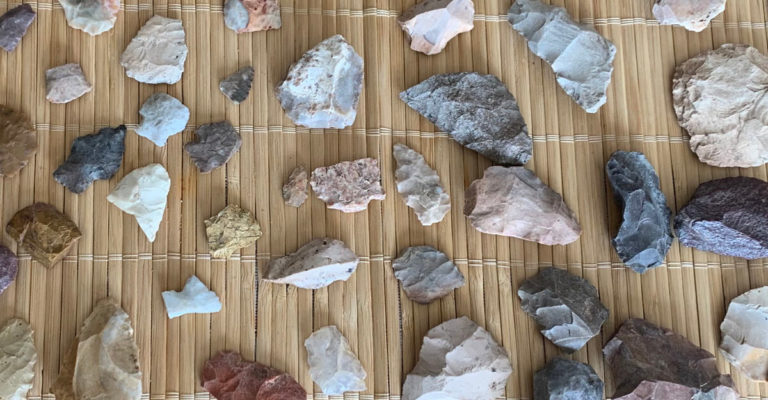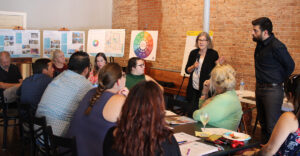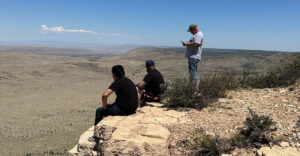“Not all who wander are lost,” wrote JRR Tolkien in his epic tale, The Fellowship of the Rings.
Tolkien observed how a situation might appear one way, but may be entirely different in reality. For Gothard brothers Joel and Shawn, the urge to wander, to rove, and to look in new places around Southeastern New Mexico does not equate to a sense of being lost. On the contrary, traversing the desert dunes and mesquite flats establishes a connection. That connection is one to the earliest human inhabitants of the area. The brothers enjoy the thrill of finding lost stone implements of early regional dwellers.
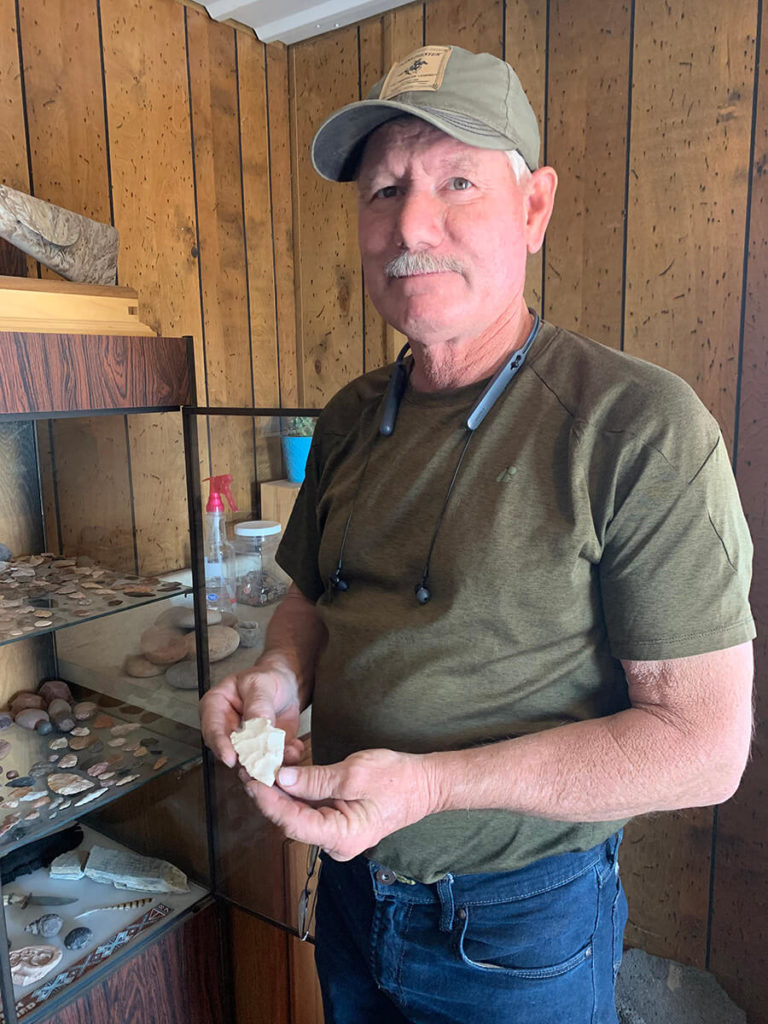
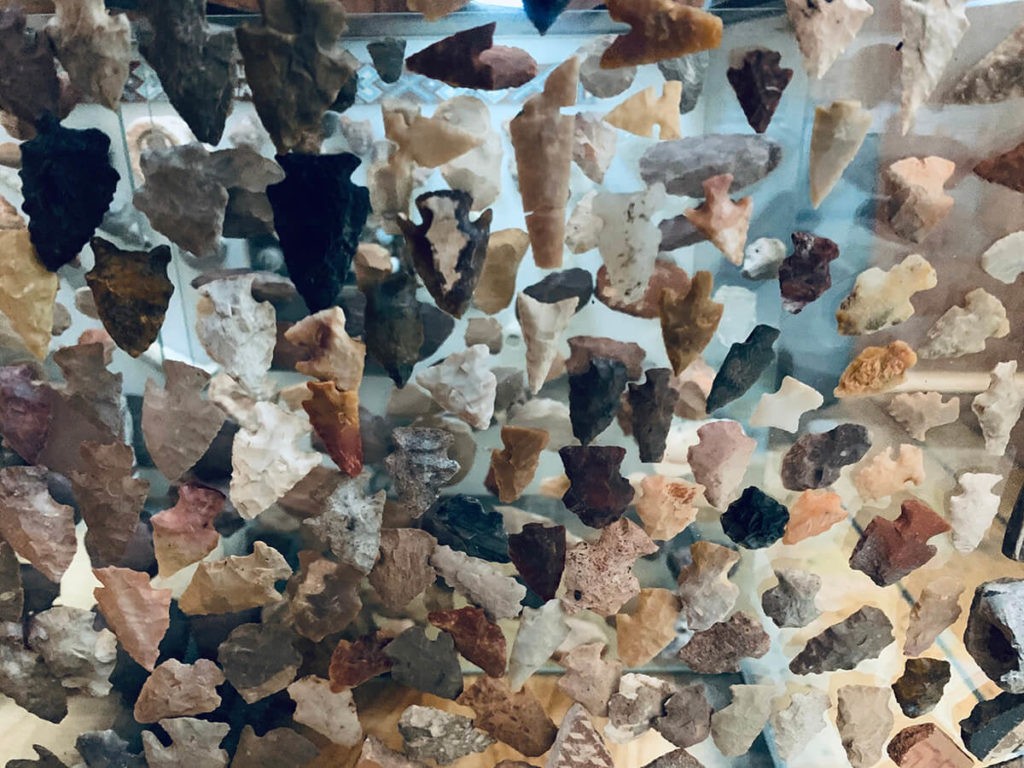
Their wanderings over the years have led to two distinct collections of points and adz (scrapers). When Shawn comes across an arrowhead on top of the sand, he said he “dreams about what the lifestyle would have been like in those days. Did they live in a constant battle of the elements, a nature red in tooth and claw? Or was it more leisurely than our frantic modern one?” Joel added to his brother’s statements with “every find doesn’t bring answers, just more questions and connections. I tend to find points when I’m bowhunting. With a still sharpened arrowhead, while holding my own recurve bow and arrow becomes a really humbling experience. It is a connection with ancient man. Hundreds maybe even thousands of years ago a hunter, like me, stood in the same spot doing exactly what I’m doing.” Despite the differences between ancient and modern lifestyles, perhaps humans are more similar than what we expect. Collections of points, like the Gothard brothers’, remind us of the similarities across the centuries; humans hunt to eat and have used tools to bring down prey since the dawn of time.
Their collections are the products of chance discovery. On average Shawn walks about five miles on his desert adventures and Joel about 25 miles because his wanderings generally coincide with hunting trips. Considering that each of the 150 points in Shawn’s collection and the 50 or so in Joel’s collection are the result of the number of miles each brother wandered, the points represent many hundreds of hours of walking. By Shawn’s estimates, he has walked more than 750 miles on foot and by Joel’s estimate about 1,250 miles across the shifting sands which reveal stray points and discarded tools.
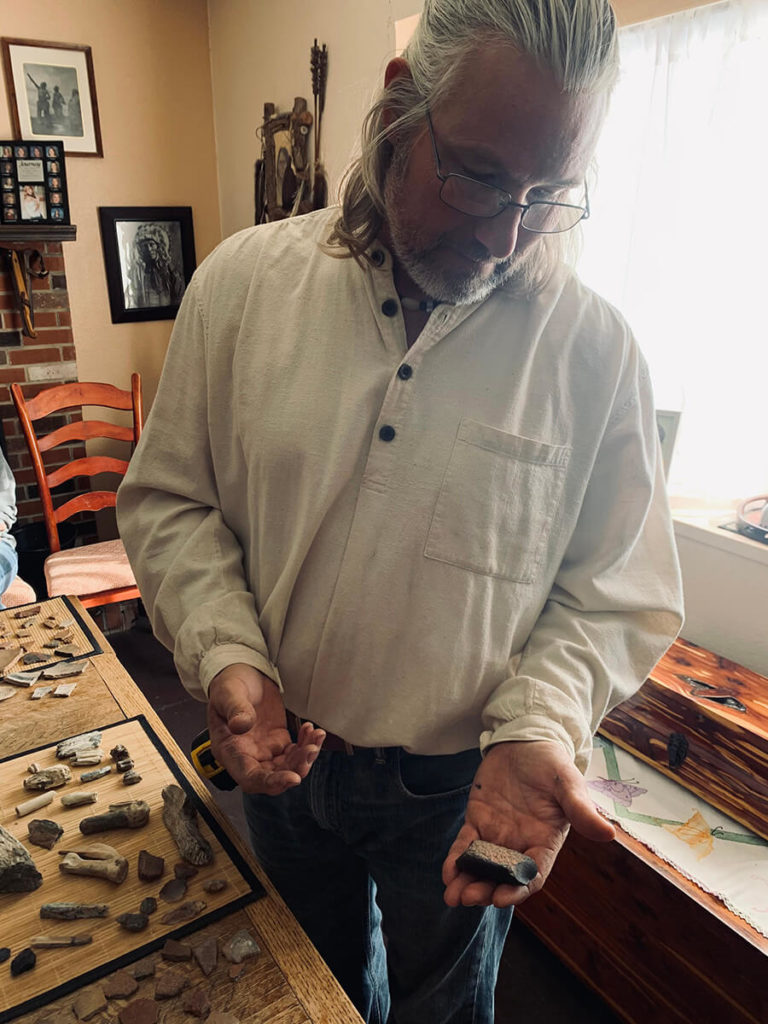
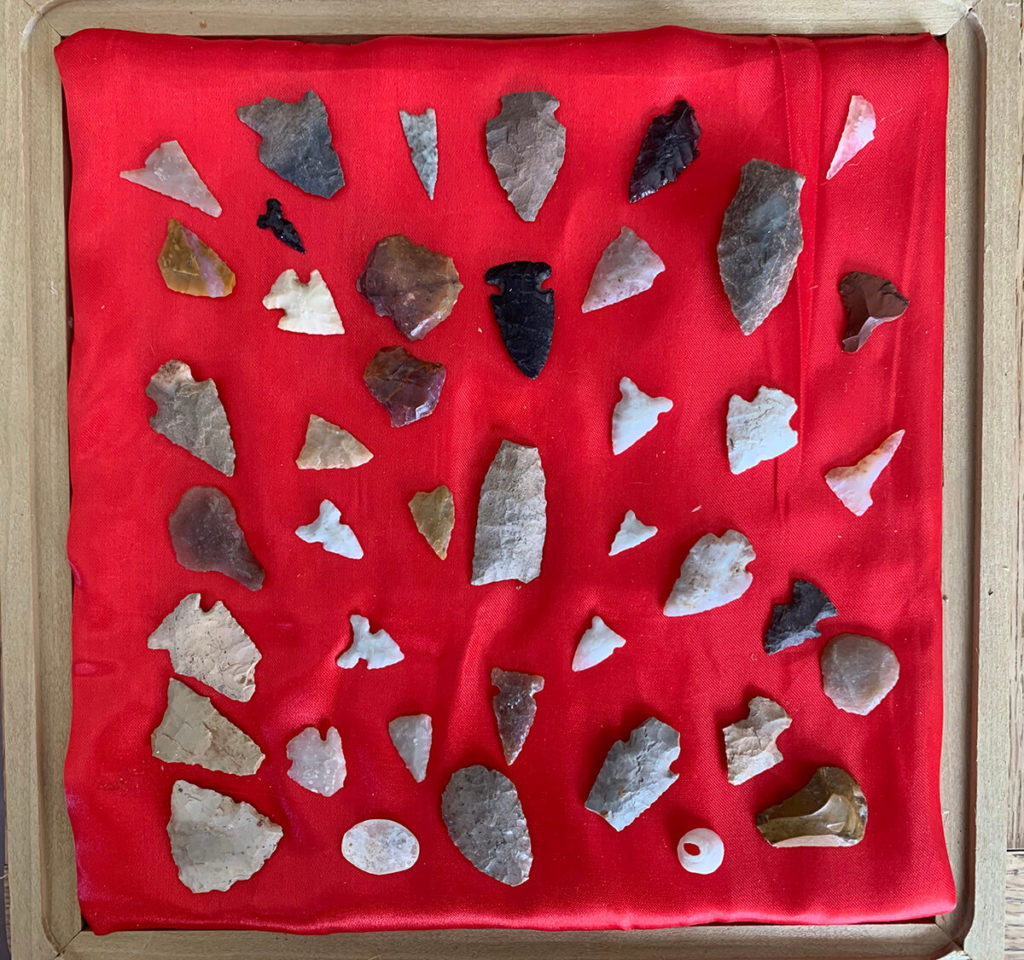

In addition to the hunting connection, both Joel and Shawn appreciate the craftsmanship behind the stone points. Both brothers enjoy woodworking and bladesmithing. Shawn turns his hand at a little scrimshaw which is carving on bone or antler. Joel recently started a craft venture called Joel’s Custom Heirlooms where he builds heirloom-quality furniture, knives, and jewelry. They both have an eye for detail and can discuss how each point was made. In fact, Shawn replicated an arrowhead to keep with his point collection to remind him of the work behind each piece.
Made from a process known as “pressure flaking,” every arrowhead undergoes a series of calculated percussive blows from an antler base or another such semi-soft material. First, a stone or bone/antler removes excess stone from a “blank” to create a preform. This is called percussion flaking. Then it is followed up with more precise shaping and sharpening with pressure flaking using an antler tip or fine-pointed tool. Modern flintknappers, as they’re called, use a copper rod glued into a handle for this step. Each blow of the shaping tool creates unique waves across the surface of the arrowhead. No two are exactly the same even when points are made in the same style. Perhaps it’s due to the unique qualities of each stone point that leads to the adrenaline rush when Joel and Shawn notice the shape of one on top of the sand. An edge may catch an eye. You may wonder if what you’re seeing really is what your mind wants to see until you’re standing over the point experiencing unbridled excitement at a connection that sends you back in time a few hundred or a few thousand years.
Article written by Kaity Hirst and originally published in Focus on Artesia 2021 Spring edition.




